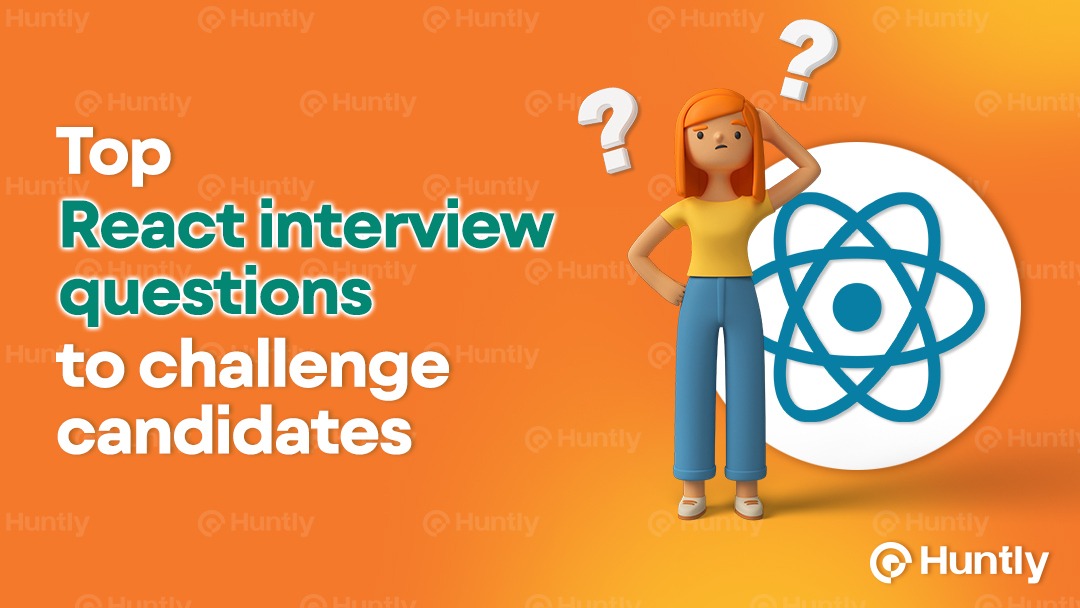What Are Sourcing Tools for Recruiters?
Sourcing tools for recruiters are software that aims at optimizing tech recruiting as much as possible. Sourcing tools can be of different types: candidate relationship management (CRM) systems, social media, or job boards, etc.
When using tools for sourcing candidates, recruiters receive a number of benefits:
- reduced sourcing time is achieved by the functionality that software provides for candidate sourcing. The most common features are the search field, filters, quick view, ratings, etc.
- ability to process big volumes of candidate profiles. Sourcing tools were created to make recruiters’ lives easier, so they are intentionally built in a way to handle thousands of candidate profiles.
- relevant candidate search. Sourcing tools are divided by industries, markets, and locations, which allows for customizing candidate search to get the best results possible. For example, if you’re looking for tech specialists, you’re likely to use GitHub or Stack Overflow. In case you need to fill a UI/UX designer position, Dribble and Behance will be better sourcing options.
Top Sourcing Tools for Recruiters
There are hundreds, if not thousands, of tools you can use to streamline your sourcing process. In this section I wish to share a list of the best recruiting sourcing tools I’ve come across. All of them are popular, workable, and worth your attention. So, let’s get started.

I’ll bet that LinkedIn is one of the first recruiting sourcing tools that comes to mind when you think about finding IT talents. Officially launched in 2003, LinkedIn still remains the most famous and widely used social media platform for sourcing of candidates.
Pros: Thanks to LinkedIn’s presence in more than 200 locations worldwide, this platform provides access to a great talent pool. Moreover, loads of LinkedIn users make sure to keep their work history detailed and updated ‒ this allows professional recruiters to spend their time efficiently when looking for candidates.
Cons: Since LinkedIn is very popular among IT recruiters, competition in candidate search is one of the obvious disadvantages.
Price: As a recruiter, you can use limited functionality for free which might be enough for a beginner in the industry. But professional recruiters might want to use one of the LinkedIn paid products: LinkedIn Premium or Recruiter Lite.
One of the advantages recruiters get with LinkedIn Premium is extended search and filter functionality. With the ability to set search criteria, you can improve search results when looking for candidates. LinkedIn offers a 1-month free trial for this service, but when it’s over, you’re charged depending on the plan you choose (e.g. $59.99 for LinkedIn Premium Business or $79.99 for LinkedIn Premium Sales Navigator).
Recruiter Lite is LinkedIn’s solution for effective sourcing and hiring. A single license for this solution costs $170/month or $1,680/year. To learn about Recruiter Professional Services and Recruiter Corporate pricing, you should contact a LinkedIn product consultant.
Similar tools: Facebook, X (Twitter)
💡 Note: Understanding the ins & outs of the tech recruitment process, we at Huntly do our very best to simplify this job for our community members. That’s why we developed a self-referral feature that allows you to share vacancy information from our platform directly to your LinkedIn feed. You can use this feature to attract potential talents in one click, instead of spending hours searching for relevant candidates on your own. We believe this feature is extremely helpful when you look for remote developers and consider IT outsourcing to Latin America or IT outsourcing in Eastern Europe.

Stack Overflow
One of the most popular developer communities, Stack Overflow is also one of the best sourcing tools for recruiters to find software engineers. To speed up the sourcing process, you can use an X-ray search through Google. For example, type in site:stackoverflow.com "Java developer" "Poland" to find the corresponding developer on Stack Overflow.
Pros: It’s easy to navigate Stack Overflow thanks to tags that ensure search efficiency; you can find thousands of relevant profiles by choosing corresponding tags. This community also allows employer brand development if you want to build trustful and long-term relationships with community members and attract their attention to your company.
Cons: There are no CVs so you can’t really analyze developers’ skills directly on this platform. However, you can learn about their competence through their participation in public discussions.
Price: It’s possible to use Stack Overflow for free to source candidates. In case you want to advertise your company through newsletters, podcasts, or blog posts, you’ll have to contact Stack Overflow representatives through the form on the website.
Similar tools: GitHub, Reddit
Slack
While many of us associate Slack with work-related communication within internal teams, it can also serve as one of the tools for recruiters to find tech talents. Thanks to great popularity and constant growth of active daily users (from 8.7 million in 2019 to 38.8 million in 2024), Slack is a worldwide talent hub where you can find great candidates.
Pros: Slack communities are divided by industries, so it’s easy to search for necessary specialists by joining specific workspaces.
Cons: Joining a community of your interest can take some time. If you want to become a part of a private community, your application should be first verified by an admin.
Price: Free.
Similar tools: Discord, Telegram
Wellfound
When you think about how to source for candidates, using job boards is another popular option. Wellfound is a US-based job board that provides access to millions of candidate profiles on both local and global levels.
Pros: If you don’t have the budget for extended sourcing functionality, you can take advantage of a free version that offers job posting, candidate sourcing (limited), and applicant tracking functionality. You can also create customized email templates for accepting and rejecting applicants.
Cons: According to the Forbes review, customer support could be more reactive. While dedicated account management is included in the Pro plan, other users might be waiting several hours to resolve their requests.
Price: Free, premium plans vary from $149 to $499 a month.
Similar tools: Mirajobs, Guru
Betterteam
A job post distribution and applicant tracking system in one bottle, Betterteam allows recruiters to effectively manage candidate search from one place. This platform has a very high rating on review websites which makes it one of the top sourcing tools for recruiters.
Pros: Betterteam provides access to 100+ job boards to hire developers in the USA, Europe, or Latin American tech hubs. Thanks to such a great reach, you can expect a big candidate pipeline. There’s also a built-in ATS for convenient applicant tracking.
Cons: According to user reviews, one of the frequent cons is the lack of functionality. Recruiters often face the inability to edit job posts on their own, use specific filters when sorting candidates, or add mandatory fields to their vacancies.
Price: Betterteam offers several plans with the cheapest at $39 a month and the most expensive at $598 a month.
Similar tools: Beamery, SeekOut
RecruitEm
An obvious difference between RecruitEm and other platforms is its focus on dedicated professional hubs. This platform provides you with the functionality for an X-ray search through several professional networks such as LinkedIn, Dribble, GitHub, Xing, Stack Overflow, and X (Twitter).
Pros: Once you enter the website, you notice its user-friendly interface: even new recruiters can handle candidate search easily. Also, access to different professional networks in one place makes sourcing easier, especially if you need to hire talents from various fields.
Cons: While this platform can help you find candidates easily, there’s no applicant tracking functionality which makes the whole sourcing process not very convenient.
Price: RecruitEm is one of the completely free recruiting sourcing tools, so you can try it out right away and see if it meets your sourcing needs.
Similar tools: Recruitment Geek, HeroHunt
How to Choose the Best Sourcing Tools for Recruiters
Now that we have an understanding of different sourcing tools in recruitment, it’s time to decide which of them to use. Let me share the tips that will help you make the right choice.

Identify Your Needs
Before you start using any recruiting tools for sourcing, select a specific vacancy to work on. Depending on the role, industry expertise, and locations you need to hire from, define your focus. Are you hiring tech or non-tech specialists? How many professionals do you need to hire?
Research Available Options
As a Huntly recruiter, you probably source for tech positions in the IT industry most often, so I can definitely recommend all the human resources recruitment tools listed above. If you focus on non-tech specialists, you can still use some of the mentioned platforms such as LinkedIn or RecruitEm.
Assess Features and Functionalities
Take your time to explore every tool that you’re considering to use. It’s important to understand what functionalities each software for recruiters offers, which of the functionalities you really need, and which you might lack. To gather the maximum information about each tool, visit their homepages, do research, book a demo, or have a call with a company representative. With this information at hand, you’ll be able to understand if one tool will cover all your recruiting needs (or if you’ll have to use several programs for effective sourcing).
Consider User Experience
If there’s a free trial, take advantage of this opportunity to see if a tool is convenient to use. If there’s no such option, read user reviews on the available resources.
Ask Your Colleagues
It’s a good idea to ask other experienced recruiters for advice, and you can do this in our Huntly community. If you can’t decide on the best free sourcing tools for recruiters, I encourage you to join our community where you’ll find answers to this and other recruitment-related questions.
Final Thoughts
With over a decade of tech recruitment experience, what I can say for sure is that your sourcing candidates strategy shouldn’t be limited to one tool. While a single tool could be enough in some cases, professional recruiters should generally work with different recruiter sourcing tools to find the best talent for any position.
So, I hope this information was useful. Don’t hesitate to try out candidate sourcing tools I’ve mentioned in this article and feel free to extend this list. Once you have remarkable candidates you’d like to refer, check out current Huntly positions, and earn generous referral bonuses!
















